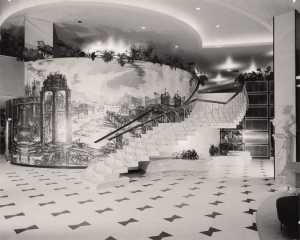The Fontainebleau – Miami Modernist Architecture and Architect Morris Lapidus
Happy Town Tuesday everyone! For this week’s post, I thought I would highlight a notable architectural style, figure, and site from my own hometown of Miami, Florida. A distinct offshoot of the Mid-Century Modern architectural style, Miami Modernist architecture (coined MiMo) developed in South Florida during the post-war period. Architect Morris Lapidus (1902-2001) greatly influenced and even defined the MiMo style in the 1950s and 60s, infusing neo-baroque architectural elements into his designs. Lapidus was a very successful and prolific architect both throughout the United States and internationally. Perhaps most notably, he designed the iconic Fontainebleau Hotel, a hotel regarded by some as the most famous hotel in the world, even appearing as the set of a James Bond film in the 60s.

(A vintage aerial photograph of the Fontainebleau hotel. – The Fontainebleau Miami Beach)
The Fontainebleau’s most well-known feature may be its “stairway to nowhere.” While leading to a cloakroom, the real appeal of the staircase was to provide the hotel’s guests with the opportunity to make a dramatic descent down to the lobby, typically before a group of onlookers.

(Fontainebleau famous “floating staircase” AKA the “staircase to nowhere”, Miami Beach, 1954 – The Fontainebleau Miami Beach)
While the Fontainebleau has been remodeled and transformed in the decades since Lapidus’ original design, his impact is undeniable – both the hotel and his designs as a whole have become a symbol of the city of Miami and live on to this day.
To learn more about the Morris Lapidus and the Fontainebleau Hotel, check out this article by Architectural Digest, this article, this article by CNN, this article by the New York Times, and Fontainebleau.com.
Article by Nick Lorenzo, Histoury Marketing and PR Intern
